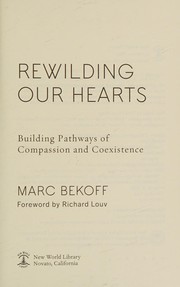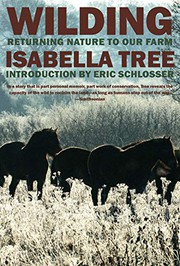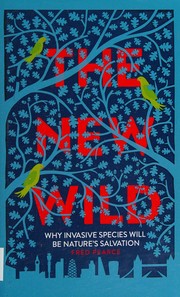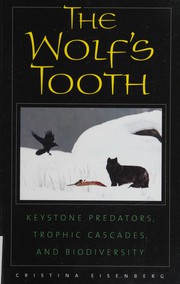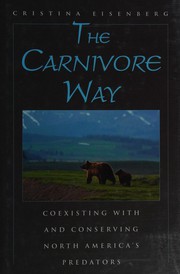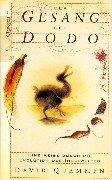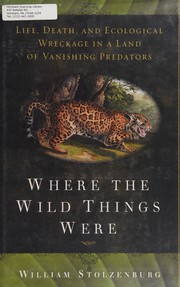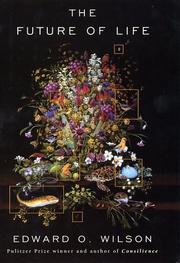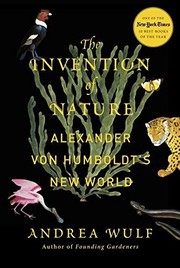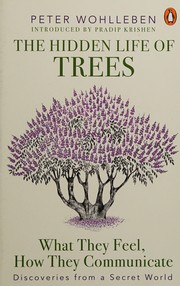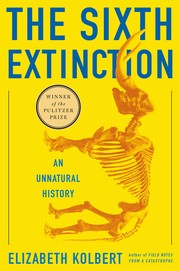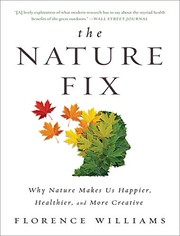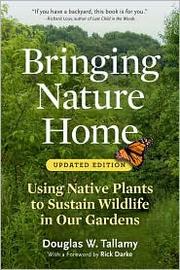Are you passionate about the concept of rewilding and its impact on the environment? If so, you’ll love our list of the 20 best books about rewilding. These books delve into the fascinating world of ecological restoration, wilderness conservation, and the reintroduction of native species. Whether you’re a nature enthusiast, an environmentalist, or simply curious about rewilding, these books are sure to inspire and educate. Get ready to explore the beauty and importance of rewilding through the pages of these captivating reads.
Contents
- 1 20 Best Books About Rewilding
- 2 Rewilding Our Hearts: Building Pathways of Compassion and Coexistence
- 3 Wilding: The Return of Nature to a British Farm
- 4 The New Wild: Why Invasive Species Will Be Nature’s Salvation
- 5 The Once and Future World: Nature As It Was, As It Is, As It Could Be
- 6 Feral: Rewilding the Land, Sea, and Human Life
- 7 The Wolf’s Tooth: Keystone Predators, Trophic Cascades, and Biodiversity
- 8 The Carnivore Way: Coexisting with and Conserving North America’s Predators
- 9 The Song of the Dodo: Island Biogeography in an Age of Extinctions
- 10 Where the Wild Things Were: Life, Death, and Ecological Wreckage in a Land of Vanishing Predators
- 11 The Future of Life
- 12 The Serengeti Rules: The Quest to Discover How Life Works and Why It Matters
- 13 The Invention of Nature: Alexander von Humboldt’s New World
- 14 The Hidden Life of Trees: What They Feel, How They Communicate—Discoveries from a Secret World
- 15 The Sixth Extinction: An Unnatural History
- 16 The Nature Fix: Why Nature Makes Us Happier, Healthier, and More Creative
- 17 The Great Animal Orchestra: Finding the Origins of Music in the World’s Wild Places
- 18 Rewilding: The Radical New Science of Ecological Recovery
- 19 Bringing Nature Home: How You Can Sustain Wildlife with Native Plants
- 20 Landmarks
- 21 A Sand County Almanac
- 22 Conclusion
- 23
- 24 Discover the Best Marriage Fiction Books in the 2024 Updated Edition
- 25 Best Books About Datvisualization. 2024 Edition
- 26 Unveiling the Best Compassion Books in this 2024 Update
20 Best Books About Rewilding
Rewilding Our Hearts: Building Pathways of Compassion and Coexistence
by Marc Bekoff
Rewilding Our Hearts is a captivating book about rewilding, written by renowned author Marc Bekoff. In this insightful work, Bekoff explores the concept of rewilding, which goes beyond restoring ecosystems and wildlife to their natural state, to encompass a deep and meaningful connection with the natural world. Through personal anecdotes, scientific research, and compelling arguments, Bekoff makes a compelling case for building pathways of compassion and coexistence with the natural world. This book encourages readers to embrace a more empathetic and harmonious relationship with all living beings, and to consider the impact of human actions on the environment. With its thought-provoking insights and practical advice, Rewilding Our Hearts is a must-read for anyone interested in exploring the interconnectedness of all life on Earth.
Wilding: The Return of Nature to a British Farm
by Isabella Tree
Wilding: The Return of Nature to a British Farm by Isabella Tree is a captivating book about rewilding, which tells the inspiring story of a couple who transformed their struggling farm into a thriving ecosystem. Through their bold decision to let nature take its course and reintroduce native species, the farm became a haven for wildlife and a model for sustainable land management. Isabella Tree’s vivid storytelling and in-depth research make this book a compelling read, offering valuable insights into the potential of rewilding to restore biodiversity and mitigate the impact of climate change. Wilding is a thought-provoking and hopeful exploration of the power of nature to heal and regenerate, making it a must-read for anyone interested in environmental conservation and the future of our planet.
The New Wild: Why Invasive Species Will Be Nature’s Salvation
by Fred Pearce
The New Wild: Why Invasive Species Will Be Nature’s Salvation by Fred Pearce is a thought-provoking book about rewilding that challenges our traditional views on invasive species. Pearce argues that instead of seeing invasive species as a threat to be eradicated, we should embrace them as part of the solution to environmental degradation. He presents a compelling case for how these species can actually help restore ecosystems and increase biodiversity. Through engaging storytelling and in-depth research, Pearce explores the complex relationships between humans, non-native species, and the natural world. This book on rewilding offers a fresh perspective on conservation and encourages readers to rethink their assumptions about what it means to restore and protect nature. The New Wild is a must-read for anyone interested in the future of our planet and the evolving field of ecological restoration.
The Once and Future World: Nature As It Was, As It Is, As It Could Be
by J.B. MacKinnon
The Once and Future World: Nature As It Was, As It Is, As It Could Be by J.B. MacKinnon is a thought-provoking book on rewilding that explores the concept of rewilding and its potential to restore the natural world to its former glory. MacKinnon takes readers on a journey through time, comparing the landscapes of the past with the degraded environments of today, and offers a compelling vision for the future of our planet. Through vivid storytelling and insightful analysis, the author challenges us to reconsider our relationship with nature and to imagine a world where wilderness thrives once again. This rewilding book is an important read for anyone interested in environmental conservation, biodiversity, and the potential for restoration.
Feral: Rewilding the Land, Sea, and Human Life
by George Monbiot
Feral: Rewilding the Land, Sea, and Human Life by George Monbiot is a captivating book on rewilding that explores the potential for restoring the natural world. Monbiot presents a powerful argument for allowing nature to reclaim areas that have been devastated by human activity, and he shares inspiring examples of successful rewilding projects from around the world. With a blend of personal narrative, scientific research, and ecological philosophy, the author advocates for a profound shift in our relationship with the natural world. Feral challenges readers to reconsider our assumptions about wilderness, biodiversity, and the role of humanity in the environment. Monbiot’s passionate prose and compelling vision make this rewilding book a thought-provoking and essential read for anyone interested in conservation, ecology, and the future of our planet.
The Wolf’s Tooth: Keystone Predators, Trophic Cascades, and Biodiversity
by Cristina Eisenberg
The Wolf’s Tooth by Cristina Eisenberg is a fascinating book about rewilding that delves into the crucial role of keystone predators in maintaining biodiversity. Eisenberg explores the concept of trophic cascades, illustrating how the presence or absence of top predators like wolves can impact entire ecosystems. Drawing on extensive research and fieldwork, she presents compelling evidence of the far-reaching effects of keystone predators on the environment, from regulating herbivore populations to shaping vegetation and even influencing river systems. Through engaging storytelling and scientific insight, Eisenberg makes a compelling case for the importance of reintroducing and conserving these apex predators in our landscapes. The Wolf’s Tooth is a must-read for anyone interested in ecology, conservation, and the intricate interconnectedness of species in our natural world.
The Carnivore Way: Coexisting with and Conserving North America’s Predators
by Cristina Eisenberg
The Carnivore Way: Coexisting with and Conserving North America’s Predators by Cristina Eisenberg is a captivating book on rewilding that delves into the intricate relationships between humans and North America’s predators. Eisenberg’s in-depth exploration of the coexistence and conservation of carnivores offers a compelling look at the challenges and opportunities in preserving the natural balance of ecosystems. Through her immersive storytelling and insightful research, she sheds light on the importance of rewilding and the critical role that predators play in maintaining healthy ecosystems. With a focus on coexisting with these majestic creatures, The Carnivore Way is a must-read for anyone interested in understanding and supporting the rewilding movement. Eisenberg’s passionate and informative approach makes this book about rewilding a valuable resource for conservationists, nature enthusiasts, and anyone who cares about the future of our planet.
The Song of the Dodo: Island Biogeography in an Age of Extinctions
by David Quammen
The Song of the Dodo: Island Biogeography in an Age of Extinctions by David Quammen is a captivating exploration of the delicate balance of life on isolated islands and the impact of human activity on biodiversity. This book delves into the concept of rewilding, highlighting the interconnectedness of species and the importance of preserving natural habitats. Quammen’s vivid storytelling and in-depth research shed light on the fascinating world of island biogeography, offering a thought-provoking look at the challenges and opportunities for conservation in the modern era. Whether you’re a nature enthusiast or simply curious about the intricacies of our planet’s ecosystems, this rewilding book provides a compelling and informative read that will leave you with a deeper appreciation for the diversity of life on Earth.
Where the Wild Things Were: Life, Death, and Ecological Wreckage in a Land of Vanishing Predators
by William Stolzenburg
Where the Wild Things Were by William Stolzenburg is a captivating book on rewilding that delves into the intricate relationship between predators and their ecosystems. Stolzenburg explores the consequences of the disappearance of predators from various landscapes, painting a vivid picture of the ecological imbalances that occur in their absence. Through gripping storytelling and compelling scientific research, the author illustrates how the loss of these apex predators has led to widespread ecological wreckage, disrupting the delicate balance of nature. This thought-provoking rewilding book sheds light on the urgent need to restore these vanishing predators to their rightful place in the wild, offering a powerful and insightful perspective on the critical role they play in maintaining the health and diversity of our natural world.
The Future of Life
by Edward O. Wilson
The Future of Life by Edward O. Wilson is a groundbreaking book on rewilding and the urgent need to preserve the planet’s biodiversity. Wilson, a renowned biologist, explores the devastating effects of human activity on the natural world and offers a compelling argument for the preservation of Earth’s diverse ecosystems. Through vivid storytelling and scientific research, Wilson paints a vivid picture of the beauty and complexity of life on our planet, while also shedding light on the growing threat of extinction facing countless species. The book serves as a wake-up call, urging readers to take action to protect and restore the balance of nature. Wilson’s eloquent prose and impassioned plea for conservation make The Future of Life a must-read for anyone concerned about the future of our planet.
The Serengeti Rules: The Quest to Discover How Life Works and Why It Matters
by Sean B. Carroll
The Serengeti Rules by Sean B. Carroll is a captivating exploration of the fundamental principles that govern life on Earth. This thought-provoking book delves into the concept of rewilding, uncovering the delicate balance of nature and the impact of human intervention. Carroll takes readers on a journey through various ecosystems, from the Serengeti to the depths of the ocean, revealing the interconnectedness of all living organisms. Through compelling stories of pioneering scientists, he demonstrates how the rules of life shape the natural world and the implications of disrupting these rules. This rewilding book offers a profound insight into the intricate web of life and the significance of preserving biodiversity for the future of our planet. The Serengeti Rules is a must-read for anyone passionate about conservation, ecology, and the wonders of the natural world.
The Invention of Nature: Alexander von Humboldt’s New World
by Andrea Wulf
The Invention of Nature: Alexander von Humboldt’s New World by Andrea Wulf is a captivating biography that explores the life and impact of the visionary naturalist Alexander von Humboldt. Wulf’s book delves into Humboldt’s groundbreaking work in exploring and understanding the natural world, and his pioneering ideas about the interconnectedness of nature. This rewilding book sheds light on Humboldt’s travels through South America and his influential writings that inspired generations of scientists, thinkers, and environmentalists. Through vivid storytelling and meticulous research, Wulf brings to life the adventures and discoveries of this remarkable figure, highlighting his enduring legacy and relevance in today’s world. The book about rewilding presents a fascinating portrait of a man who shaped our modern understanding of nature and continues to inspire a new generation of environmental stewardship.
The Hidden Life of Trees: What They Feel, How They Communicate—Discoveries from a Secret World
by Peter Wohlleben
The Hidden Life of Trees by Peter Wohlleben is a captivating book about rewilding that unveils the remarkable world of trees. Wohlleben, a forester, shares his deep understanding of the forest and reveals the extraordinary ways in which trees communicate, feel, and support each other. Through captivating storytelling and scientific research, readers will discover the hidden networks and social structures that exist within forests, challenging the traditional view of trees as solitary individuals. This eye-opening book on rewilding sheds light on the complex and interconnected lives of trees, offering a new perspective on the natural world around us. Whether you’re a nature enthusiast or simply curious about the wonders of the forest, The Hidden Life of Trees is a must-read that will leave you with a newfound appreciation for the beauty and intelligence of the natural world.
The Sixth Extinction: An Unnatural History
by Elizabeth Kolbert
The Sixth Extinction: An Unnatural History by Elizabeth Kolbert is a captivating exploration of the ongoing mass extinction of species and the impact of human activity on the natural world. Through engaging storytelling and extensive research, Kolbert takes readers on a journey through time and around the globe to uncover the complex and devastating effects of climate change, habitat destruction, and species extinction. This eye-opening book provides a thought-provoking look at the interconnectedness of all living things and the urgent need for conservation and environmental stewardship. With its powerful message and insightful analysis, The Sixth Extinction is a must-read for anyone interested in the future of our planet and the preservation of biodiversity. It’s a compelling book about rewilding and a call to action for protecting and restoring our natural world.
The Nature Fix: Why Nature Makes Us Happier, Healthier, and More Creative
by Florence Williams
The Nature Fix by Florence Williams is a captivating book on rewilding that explores the profound impact of nature on our well-being. Through immersive research and personal experiences, Williams delves into the science behind why spending time in nature makes us happier, healthier, and more creative. She uncovers the restorative effects of natural environments on our mental and physical health, from reducing stress and anxiety to boosting creativity and cognitive function. With a compelling blend of storytelling and scientific evidence, Williams makes a compelling case for the importance of incorporating nature into our daily lives. Whether you’re a nature enthusiast or simply curious about the benefits of rewilding, this book about rewilding offers a fascinating and insightful exploration of the healing power of the natural world.
The Great Animal Orchestra: Finding the Origins of Music in the World’s Wild Places
by Bernie Krause
The Great Animal Orchestra by Bernie Krause is a captivating book about rewilding and the origins of music in the natural world. Krause, a renowned musician and naturalist, takes readers on a journey to the world’s wild places, where he explores the intricate and harmonious sounds created by animals and their environments. Through his own experiences and scientific research, he uncovers the profound connection between music and the natural world, offering a new perspective on the origins of music. This book on rewilding is a fascinating exploration of the role of sound in the natural environment and the importance of preserving these wild spaces. With beautiful prose and compelling insights, Krause’s work will inspire readers to appreciate the symphony of nature and advocate for the protection of our planet’s precious ecosystems.
Rewilding: The Radical New Science of Ecological Recovery
by Paul Jepson
Rewilding: The Radical New Science of Ecological Recovery is a fascinating book about rewilding, written by Paul Jepson. This insightful and thought-provoking book delves into the concept of rewilding, which is the process of restoring and protecting natural ecosystems and reintroducing native species to their habitats. Jepson explores the potential of rewilding to address environmental challenges and promote biodiversity conservation. Through engaging storytelling and scientific research, the book offers a comprehensive understanding of rewilding and its implications for ecological recovery. Whether you are a nature enthusiast, a conservationist, or simply curious about the future of our planet, this book about rewilding is a must-read. Jepson’s expertise and passion for the subject make this rewilding book a compelling and informative read that will inspire readers to consider the importance of ecological restoration.
Bringing Nature Home: How You Can Sustain Wildlife with Native Plants
by Douglas W. Tallamy
Bringing Nature Home: How You Can Sustain Wildlife with Native Plants by Douglas W. Tallamy is a captivating rewilding book that explores the vital role of native plants in supporting local wildlife. Tallamy presents a compelling argument for the importance of incorporating native plants into our landscapes to create thriving ecosystems for birds, insects, and other wildlife. With engaging storytelling and scientific insight, the author highlights the interconnectedness of plant and animal species and the impact of human activities on biodiversity. This book on rewilding serves as a practical guide for individuals looking to make a positive impact on their local environment by cultivating native plants. Through his passionate advocacy, Tallamy inspires readers to take action and become stewards of their own piece of the natural world.
Landmarks
by Robert Macfarlane
Landmarks by Robert Macfarlane is a captivating exploration of the natural world and our connection to it. This book delves into the language of landscapes and the power of words to shape our understanding of the environment. Macfarlane takes readers on a journey through the British Isles, uncovering the richness of the land and the significance of its features. With lyrical prose and meticulous research, he celebrates the diversity of nature and the importance of preserving it. Landmarks is a must-read for anyone interested in the beauty of the natural world and the profound impact of language on our perception of it. It’s a book about rewilding and a compelling reminder of the importance of preserving the wild spaces that shape our world.
A Sand County Almanac
by Aldo Leopold
A Sand County Almanac by Aldo Leopold is a timeless classic that delves into the author’s profound reflections on the natural world. This influential book on rewilding serves as a poignant reminder of the importance of conservation and environmental stewardship. Through Leopold’s lyrical prose and keen observations, readers are transported to the enchanting landscapes of Sand County, Wisconsin, where they witness the beauty and complexity of the natural world. The book is a compelling blend of personal narrative, ecological insights, and philosophical musings, making it a captivating read for anyone interested in rewilding, biodiversity, and the interconnectedness of all living beings. A Sand County Almanac continues to inspire readers to rethink their relationship with the environment and to advocate for the preservation of wild places.
Conclusion
As we conclude our exploration of the 20 best books about Rewilding, it’s clear that this movement has sparked a wealth of insightful and thought-provoking literature. From practical guides to inspiring narratives, these books offer a rich tapestry of perspectives on rewilding and its impact on our environment. Whether you’re a seasoned conservationist or a curious newcomer, there’s a book on this list that’s sure to captivate and inspire you to join the rewilding movement.
Which Rewilding book is best?
The best book on Rewilding can vary with personal preference, but three widely recommended titles are:
- Rewilding Our Hearts: Building Pathways of Compassion and Coexistence by Marc Bekoff,
- Wilding: The Return of Nature to a British Farm by Isabella Tree,
- The New Wild: Why Invasive Species Will Be Nature’s Salvation by Fred Pearce.
Each offers valuable insights and could be a great starting point.
What are the best books to learn about Rewilding?
For those looking to learn about Rewilding, there is a wealth of literature that can provide a comprehensive understanding of the subject. Some of the most highly recommended books include:
- Rewilding Our Hearts: Building Pathways of Compassion and Coexistence by Marc Bekoff,
- Wilding: The Return of Nature to a British Farm by Isabella Tree,
- The New Wild: Why Invasive Species Will Be Nature’s Salvation by Fred Pearce,
- The Once and Future World: Nature As It Was, As It Is, As It Could Be by J.B. MacKinnon,
- Feral: Rewilding the Land, Sea, and Human Life by George Monbiot,
- The Wolf’s Tooth: Keystone Predators, Trophic Cascades, and Biodiversity by Cristina Eisenberg,
- The Carnivore Way: Coexisting with and Conserving North America’s Predators by Cristina Eisenberg,
- The Song of the Dodo: Island Biogeography in an Age of Extinctions by David Quammen,
- Where the Wild Things Were: Life, Death, and Ecological Wreckage in a Land of Vanishing Predators by William Stolzenburg,
- The Future of Life by Edward O. Wilson
These books offer a range of perspectives on Rewilding, covering various aspects and approaches to the subject.
What are the best books on Rewilding?
The best books on Rewilding include:
- Rewilding Our Hearts: Building Pathways of Compassion and Coexistence by Marc Bekoff,
- Wilding: The Return of Nature to a British Farm by Isabella Tree,
- The Serengeti Rules: The Quest to Discover How Life Works and Why It Matters by Sean B. Carroll,
- The Invention of Nature: Alexander von Humboldt’s New World by Andrea Wulf,
- The Song of the Dodo: Island Biogeography in an Age of Extinctions by David Quammen,
- The Wolf’s Tooth: Keystone Predators, Trophic Cascades, and Biodiversity by Cristina Eisenberg.
Each offers unique insights into the subject. While these books on the topic of Rewilding are highly regarded, it’s important to note that any list of ‘best’ books is subjective and reflects a range of opinions.
What are the best Rewilding books of all time?
Choosing the best Rewilding books of all time can vary depending on who you ask, but seven titles that are often celebrated include
- Rewilding Our Hearts: Building Pathways of Compassion and Coexistence by Marc Bekoff,
- Wilding: The Return of Nature to a British Farm by Isabella Tree,
- Feral: Rewilding the Land, Sea, and Human Life by George Monbiot,
- The Song of the Dodo: Island Biogeography in an Age of Extinctions by David Quammen,
- The Future of Life by Edward O. Wilson,
- The Invention of Nature: Alexander von Humboldt’s New World by Andrea Wulf,
- and The Serengeti Rules: The Quest to Discover How Life Works and Why It Matters by Sean B. Carroll.
Each of these books has made a significant impact in the field of Rewilding and continues to be influential today.

